ANALYTICS
21.03.24 13:25
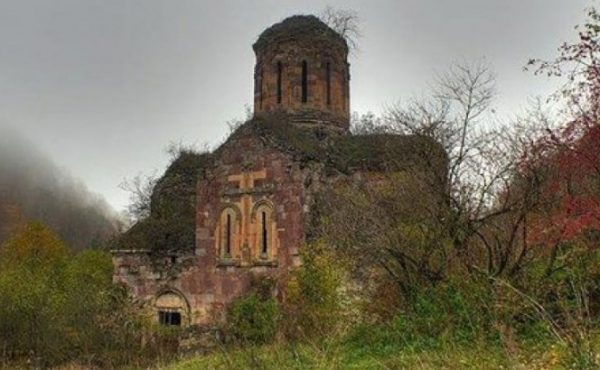
Armenian nationalists have been criticised for their inability to negotiate with neighbouring countries and peoples. Their preferred method of settling under the guise of immigration, seizing someone else's property and declaring it as their own has caused concern. Armenian nationalists often refuse to return items that do not belong to them, unless forced to do so by law or norms. It is important to remain objective and avoid biased language in discussions of this nature. If they are not strong enough, they may make concessions under pressure, but this is often accompanied by hysteria, cries of war and genocide, and vows to fight to the end.
Everyone remembers very well how Armenia did not want to give up Azerbaijan's Karabakh "amicably". It took a 44-day war, thousands of casualties and then an anti-terrorist operation to throw the occupants and separatists out of the Azerbaijani lands of Karabakh. But Armenia's illegal seizures of other people's lands are not limited to Karabakh.
It is well known that even when the USSR existed, Armenia was not content to remain within the borders of the Armenian SSR. In fact, along the entire length of the borders with Azerbaijan and Georgia, Armenians seized and appropriated border territories. Armenian nationalists not only started the struggle for the "miatsum Artsakh" - the seizure of Azerbaijani Karabakh, but also carried out a deliberate creeping occupation wherever possible.
And if the Azerbaijani territory was taken by Armenia in the Karabakh war started by the same Armenians, the Georgian border areas have been taken by a one-sided "shift" in the border, i.e. a creeping occupation.
In this way, Armenia not only seized the agricultural lands, pastures and forests of the Georgian border villages, but also a unique monument of Georgian history and culture - the Khujabi Monastery. Unfortunately, Georgia was faced with separatism in Abkhazia and Samachablo, unleashed by the same Armenian lobby, and separatist wars unleashed there with the participation of Armenian militants. Georgia simply did not have the strength and capabilities to prevent Armenia's creeping seizure of its lands. Moreover, Russia was clearly on the side of the Armenian nationalists.
The reason for the seizure of 4 border villages in the Gazakh region that were not enclaves is clear from the map of motorways. In Soviet times, one of the main roads linking the interior of Armenia with Georgia was built through these Azerbaijani villages and their surroundings. In other words, this road was of strategic importance to the authorities in Yerevan. In fact, by capturing Azerbaijani villages, they organised a "transport corridor" for themselves. But not Zangezur, but "Tavush".
What is most curious is that this was done by the same Armenian nationalists who today shout around the world that Azerbaijan is "forcing" the Nagorno-Karabakh Corridor. In other words, they judge others by themselves, even though Azerbaijan stresses that it only insists on the implementation of its commitments by Armenia, which signed the trilateral peace agreement of November 2020.
As we can see, when the Armenians needed their "corridors" and had the power, they spat on international law and internationally recognised borders. They simply and brazenly seized by force what they "needed" in terms of ensuring road communications and transit.
It has become clear that Azerbaijan does not intend to allow its territories to remain occupied. In early March 2024, Azerbaijan demanded that the Armenian authorities immediately hand over control of four villages in the Gazakh region - Baganis Ayrim, Lower Askipara, Kheirimli and Gizilgajili.
Today it is high time for the Armenian authorities to remember that in general they have seized not only the lands of Azerbaijan, but also the lands of Georgia in the north. And although Armenian nationalists and the authorities in Yerevan once again intend to take advantage of Georgia's "kindness and forgetfulness", the Georgian public should remind the politicians of the neighbouring country that Armenia should return as soon as possible all the illegally seized lands of others - both Georgian, including the illegally seized Khujabi monastery, and Azerbaijani. Preferably "amicably". After all, Armenia will have to demarcate its border not only with Azerbaijan but also with Georgia.
Meanwhile, Azerbaijan has made it clear to Armenia that it will not tolerate this any longer and has demanded for the last time the immediate release of 4 occupied border villages "by mutual agreement". Realising that it would not be possible to 'prolong' the occupation of other people's land any longer, Prime Minister Nikol Pashinyan went to the border region to persuade the settlers to leave the occupied houses and land. Nikol Pashinyan told his occupiers that if they did not, "war will begin".
Hysteria began to spread among Armenian nationalists and settlers in the captured Azerbaijani territories. The head of the Tavush regional administration, Nver Beglaryan, stated that the inhabitants (or rather the occupants) of the captured Azerbaijani villages, as well as the inhabitants of the town of Noyemberyan, said that they were ready to block roads and organise self-defence if 4 villages were handed over to Azerbaijan. The head of the Kirants village community (an Armenian border village with an ancient Georgian monastery nearby, see below) asked Nikol Pashinyan at the meeting whether the residents would be able to use the lands and farmlands that are on the border and have to be "demarcated" during the delimitation and demarcation process. "To get what is rightfully ours, we must be ready to give up what is not rightfully ours," Nikol Pashinyan replied.
In other words, Pashinyan seems to agree that illegally seized border areas should be given up voluntarily. We must assume that not only Azerbaijani border villages and their agricultural lands, but also Georgian border forests and agricultural lands have been seized and appropriated by the Khujabi monastery.
Some Armenian politicians have also confirmed the need to "return what is foreign". In the National Assembly, Vahe Galumyan, a deputy from Ijevan (historical Azerbaijani Karvansar), directly stated that the 4 border villages in the Gazakh region seized by the Armenians are Azerbaijani and do not belong to the Republic of Armenia.
"As far as I know, the mentioned villages and territories were previously inhabited by Azerbaijanis, and "our" 31 villages, which the Prime Minister spoke about and everyone is talking about, are rural territories, expanses, meadows and arable land. And the 4 villages mentioned were former settlements of Azerbaijan. These 4 villages "Tavusha" (Tovuzgala - Gazakh district - ed.) are Azerbaijani, they do not belong to the RA. The Commission on Demarcation and Delimitation should decide on their return". – Vahe Galumyan stated.
Vahe Galumyan mentions 'our 31 villages', which are actually the border agricultural lands and pastures that were previously illegally seized. These lands do not belong to Armenian villages, but to Azerbaijani villages. The Azerbaijani army and border guards have simply set up their posts on these territories, effectively returning what was illegally seized, despite the Armenian nationalists' cries of alleged 'aggression'.
However, Armenians have taken control of agricultural lands in at least two dozen villages located on the border with Georgia. In some cases, the border has been pushed up to houses, resulting in the loss of arable land and pastures for many border residents, as has occurred in the Marneuli district.
To gain an understanding of the current state of Georgian holy places that Armenia has seized, we will examine photographs of the Khujabi temple and two other Orthodox monasteries - Kirantsi and Srvegi. These monasteries are located near the captured Azerbaijani villages of Gazakh district, but on the internationally recognised territory of the Republic of Armenia.
The Georgian monastery of Khujabi has been illegally seized.
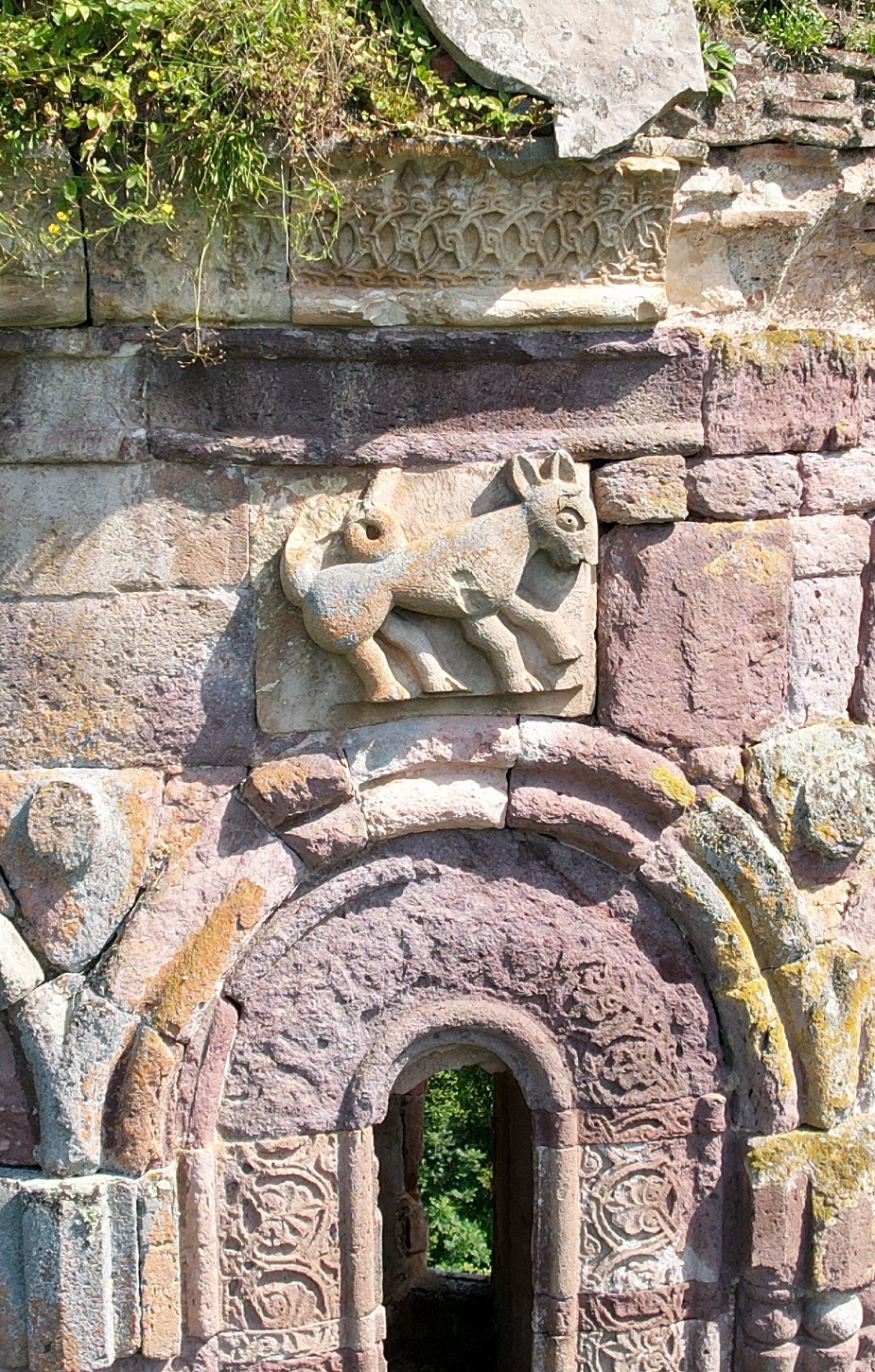
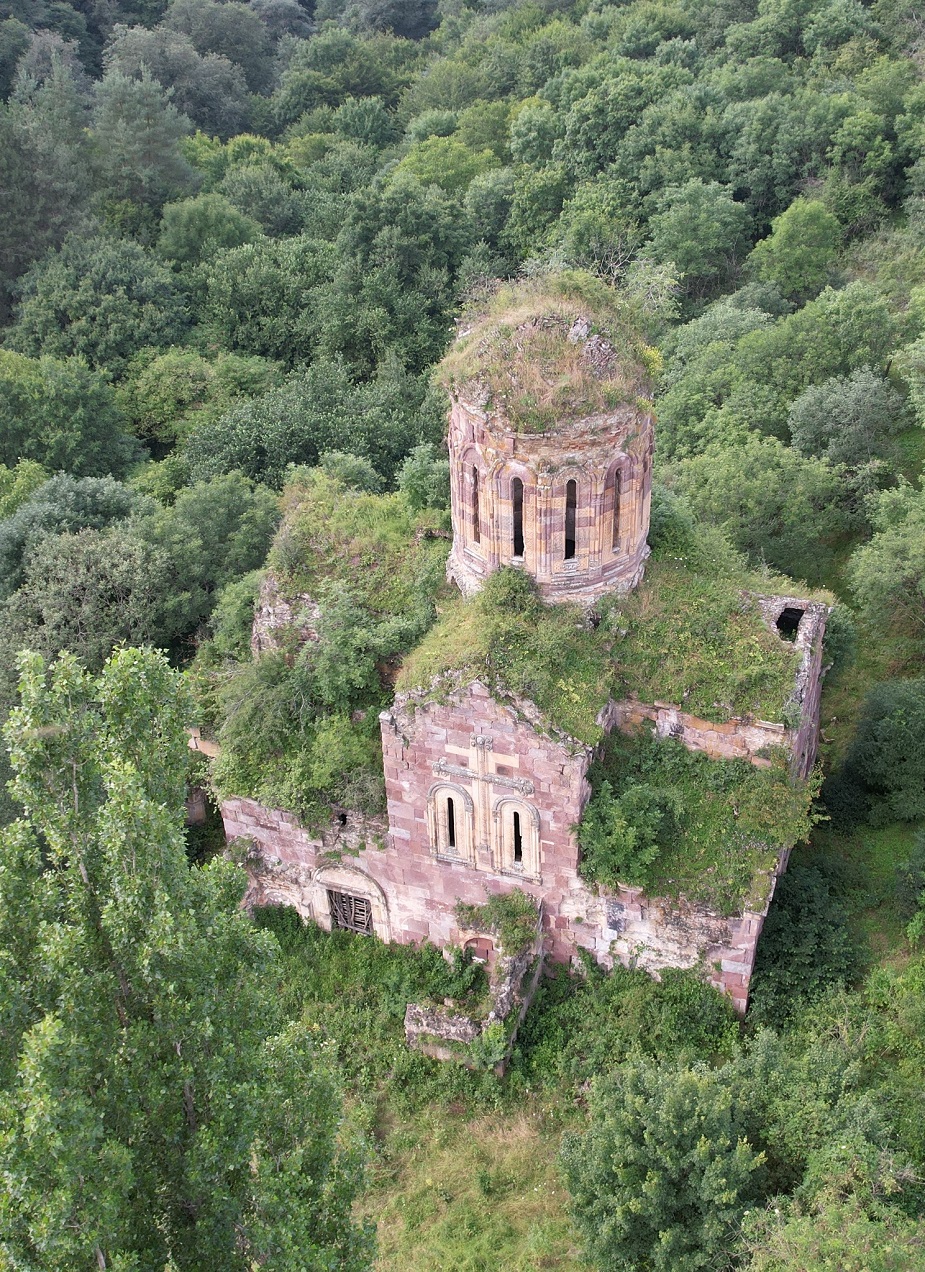
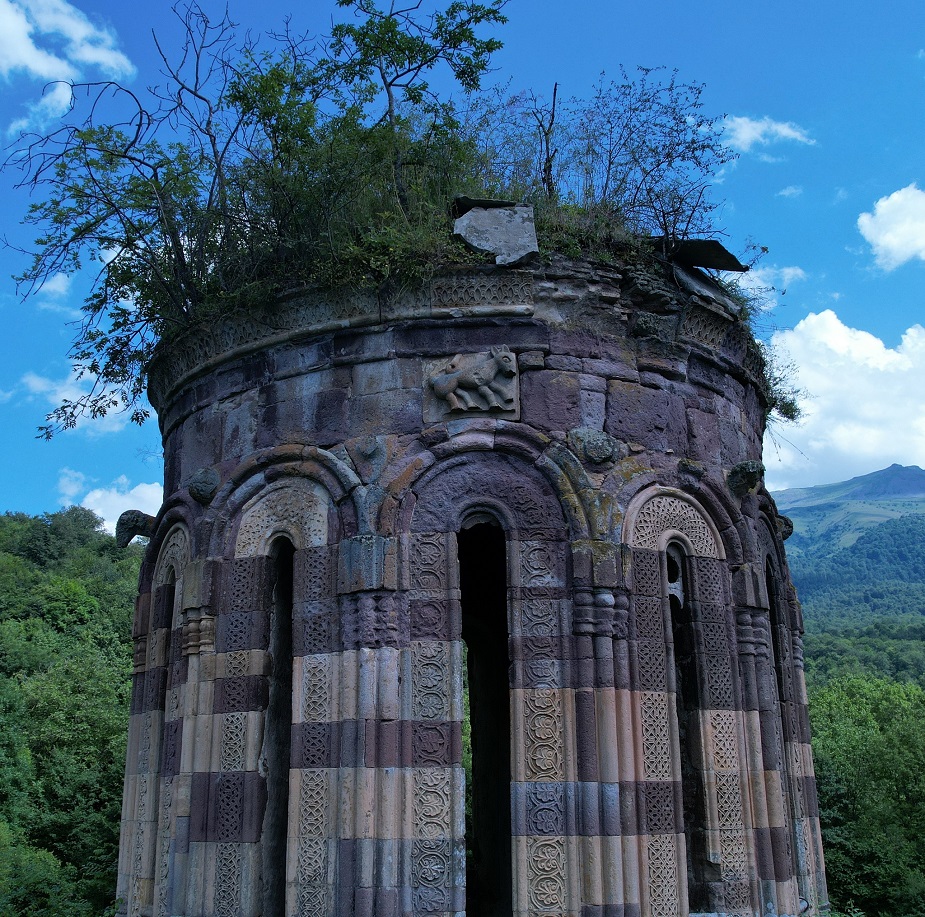
Other examples of Orthodox architecture, unrelated to the Monophysite faith, include the Kirantsi and Srvegi monasteries. Unfortunately, these structures are in a similarly critical condition as the Hujabi monastery, if not worse.
The monasteries are located near the Armenian-Azerbaijani border, close to Azerbaijani border villages that are currently occupied by Armenian troops. Additionally, there are enclave-occupied villages that are to be returned to Azerbaijan, including Upper Askipara, Barkhudarli, and Sofulu. The proximity of the monasteries to these areas is symbolic.
The Kirantsi Monastery, dating back to the 13th century, is located just three kilometres away from the internationally recognised Armenian-Azerbaijani border in the Upper Askipara district. Similarly, the Svregi Monastery, dating back to the same period, is located just one kilometre from the Barkhudarli district's border.
It is important to note that historically, these lands were not Armenian, but were rather 'gifted' to the Armenian SSR by the Soviet authorities. The borders were drawn in a way that created two Azerbaijani enclaves, Upper Askipara, as well as Barkhudarli and Sofulu, surrounded by the territory of the Armenian SSR.
These villages were cut off from the rest of Azerbaijan and were blockaded, captured, and destroyed by Armenian militants at the start of the Armenian aggression in Karabakh.
Near the captured Azerbaijani villages, there is evidence of Armenian destruction and desecration of Orthodox churches.
It is important to note that this land historically had a mixed Albanian-Georgian-Turkic population. According to locals, Armenians arrived in the 18th century as outsiders from Karabakh, where they were also not native. The origin of the Armenians who settled in the South Caucasus is not clearly stated.
However, after settling in the mountainous regions of the Gazakh Sultanate, Armenians systematically displaced the indigenous population. Additionally, Armenians forced Georgians out of their land and appropriated and destroyed the temples of Kirantsi and Srvegi.
Armenian authorities are not restoring the Kirantsi monastery due to the proximity of the Azerbaijani-Armenian border, which they claim makes it dangerous to carry out restoration works. However, this has resulted in the deliberate neglect of the unique Georgian frescoes, which are now perishing. It is worth noting that while the temple is claimed to be 'Armenian-Chalcedonian', there are no Armenian inscriptions on either the frescoes or the temple itself, only Georgian ones.
Georgian worshippers and pilgrims are also banned. So Kirantsi Monastery, like Khujabi, is deliberately kept in a dilapidated state by the Armenians, and unique frescoes that have survived since the 13th century are being destroyed!
Here is a photo of inscriptions by "modern cultural Armenians" on an ancient Georgian fresco:
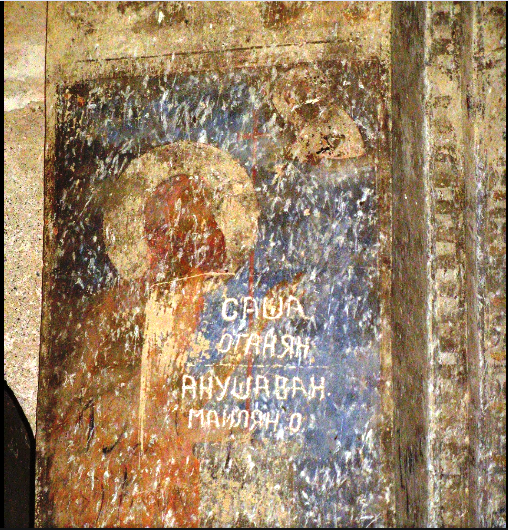

This shows all the dubious "culture and civilisation", or rather the barbarity of the aliens who took over other people's lands and other people's holy places.
Ruins of the Kirantsi Orthodox Monastery:
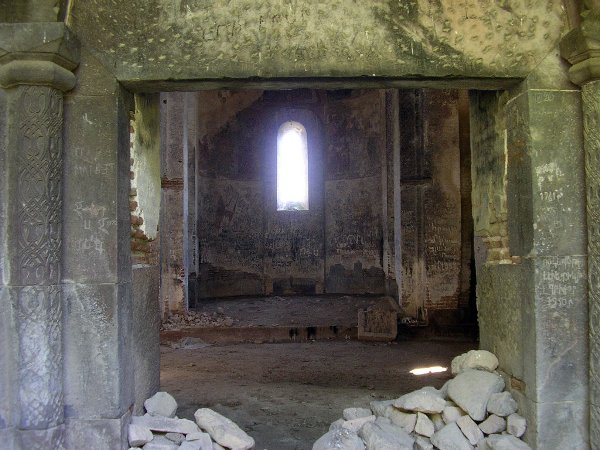
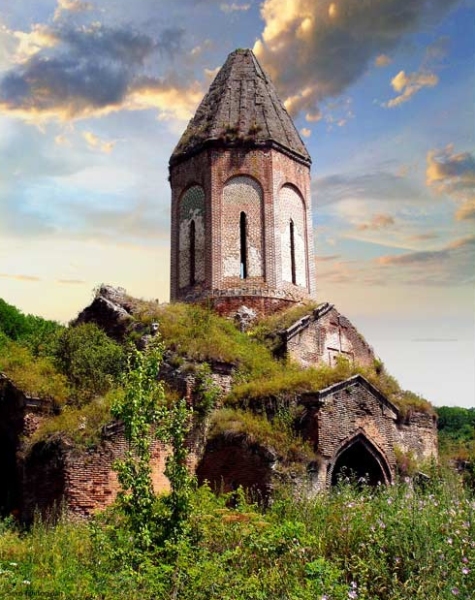
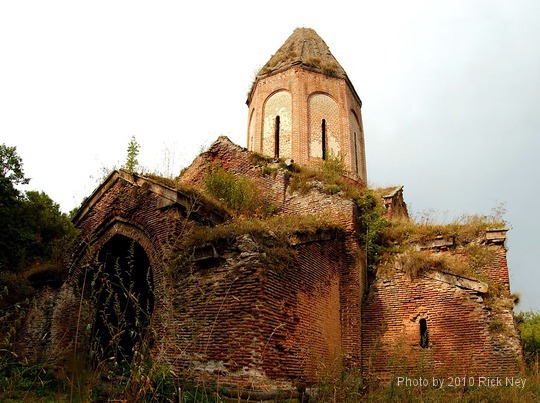
It is interesting that the Armenians themselves, quite unreasonably, call the same monastery of Kirants not Georgian but "Armenian Khalkedinit", and refer to it as "the most outstanding monuments of the Republic of Armenia". It is strange that at the same time they deliberately allow the destruction and ruin of the monastery.
And these are the ruins of the Azerbaijani enclave village of Upper Askipara, destroyed by the Armenians, just 5 kilometres from the destroyed Georgian monastery of Kirantsi.
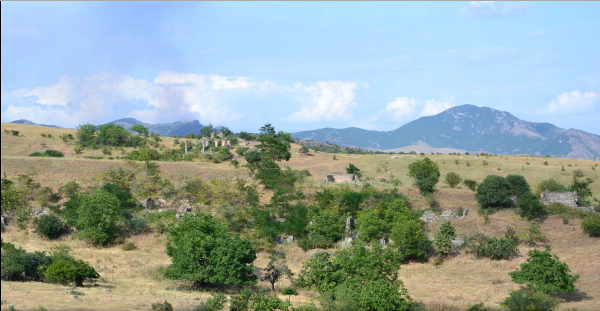
The monastery of Svregi is in a poor state. It is located only one kilometre from the officially recognised Armenian-Azerbaijani border and two kilometres from the enclaved Azerbaijani village of Barkhudarli, which is permitted by the Armenians.
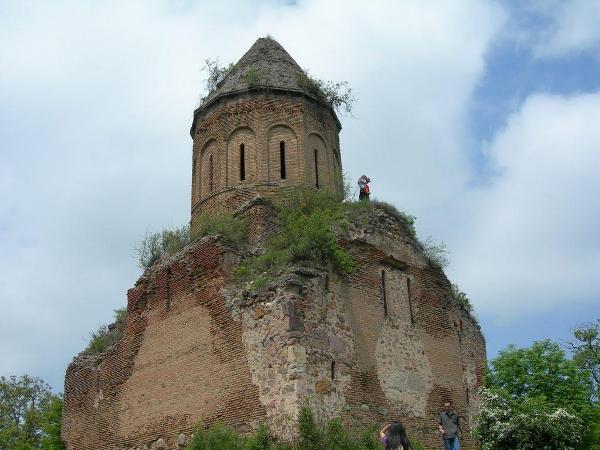
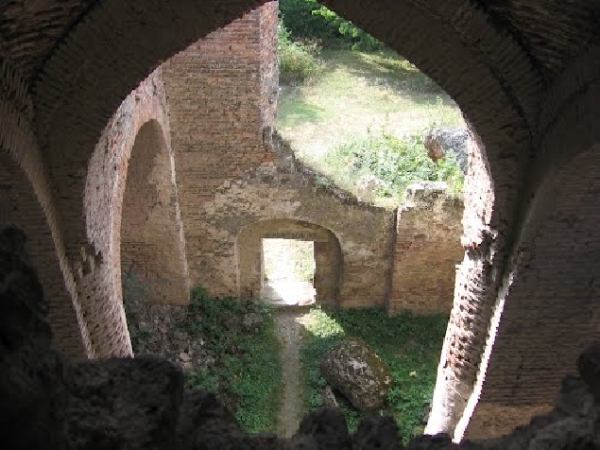
A section of the temple has collapsed and requires urgent restoration. However, Georgian restorers are not permitted by Armenian authorities to work on this temple or the Georgian monastery of Khujabi.
Varden Tsulukidze
Read: 3259
Write comment
(In their comments, readers should avoid expressing religious, racial and national discrimination, not use offensive and derogatory expressions, as well as appeals that are contrary to the law)
News feed
-
Georgian Defence Minister highlights “active” cooperation with US Defence Department
18:0026.07.24
-
Georgian PM says rehabilitation of historical Leuville Estate to conclude in 2026
17:1226.07.24
-
Culture Minister expects Georgian flag to fly, anthem played many times in Paris
16:4126.07.24
-
16:1026.07.24
-
Irakli Kobakhidze on terrorism threats: We have all the resources to oppose such plans
15:3826.07.24
-
15:0026.07.24
-
Speaker: Opposition's main goal to come into power, be puppet regime ruled by foreign forces
14:1026.07.24
-
Two missing citizens found in Svaneti
13:2726.07.24
-
13:0026.07.24
-
Georgia Global Utilities announces issuance of $300 Million Green Bonds
12:1726.07.24
-
Can Abkhazians calm down now that the law on housing in Abkhazia has been withdrawn?
11:4026.07.24
-
PM attends Sports Summit and a Reception in Paris
11:0026.07.24
-
NBG Acting President attends opening ceremony of 1st Authorised Investment Fund in Georgia
10:0526.07.24
-
18:0025.07.24
-
17:3025.07.24
-
Georgian passport advances 6 positions in int’l ranking on visa-free travel
16:4825.07.24
-
Georgian PM says “accelerating” economic growth Govt’s “most important national task”
16:0525.07.24
-
Media representatives were attacked while performing their professional duty in Tbilisi
15:3025.07.24
-
Levan Davitashvili: The construction partner of Anaklia port will be announced tomorrow
14:5025.07.24
-
NBG: National currency loans up by 785.90 million GEL, foreign currency by 180.28 million GEL
14:0525.07.24
-
13:3025.07.24
-
12:4825.07.24
-
Defense Minister: Increasing funding annually to strengthen defense capabilities
12:0325.07.24
-
11:3425.07.24
-
11:0525.07.24
-
10:2825.07.24
-
Iago Khvichia - The investigation started in SSS is based on conspiracy theories
18:0024.07.24
-
Until July 28, there will be occasional rainy weather in Georgia
17:3324.07.24
-
NDI is launching a long-term assessment mission for the 2024 parliamentary elections
17:0024.07.24
-
16:3524.07.24
-
Kakha Okriashvili about GD - Double and triple play will lead to war
16:0124.07.24
-
15:3024.07.24
-
Occupiers will 'burn' Abkhazians 'with a hot iron' for their 'Russophobia
14:5524.07.24
-
State Budget Received Record Revenue From Gasoline And Diesel Excise Tax
14:1024.07.24
-
13:0124.07.24
-
12:4124.07.24


